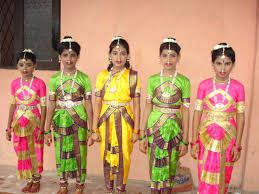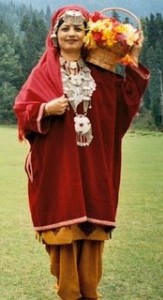source(google.com.pk)
Sri Lankan Traditional Dress Biography
Sri Lankan fashion consists of both western and traditional attire. Men mostly wear shirt and sarong (tube of fabric wrapped around waist and worn as a kilt) and women wear sarees (lengthy silk material worn over a petticoat). These are considered to be national dresses, and also common in South Asian region. However, Western attire such as suits, dresses and office wear are also common as traditional wear and employees would not face any difficulties when it comes to dressing. However, note that Sri Lanka is a Buddhist country and when visiting a temple it is advised to wear lengthy and simple clothes. For female employees, it is not advised to wear miniskirts when visiting these religious institutes.
Sri Lanka is an island country in the Indian Ocean south of India. The country was called Ceylon as a British colony. A British readers, Trevor tells us a little about his time in Ceylon as a little boy. We are just beginning to acquire basic information on Sri Lanka at this time. We are developing some basic information on Sri Lanka history. Recorded history begins with the arrival of Prince Vijaya (543 BC). Ceylon moved toward independence as India became independent. The counrry achieved dominion status within the Commonwealth (1948). Buddhism is the majority religion in Sri Lanka. While Buddhism largely died out in India, it has continued to thrive in Sri Lanka. A Sri Lanka source explains, "Buddhism is the lime light of Sri Lankan Civilization from ancient times. Everything about Sri Lankan life related to Buddhism. Buddhism practiced in Sri Lanka is called Theravada which's main focus is to give priority to the philosophy of living a simple life." We have some limited information about boys' clothing in Sri Lanka. Climate and income levels are major factors affecting children clothes in Sri Lanka. The climate is tropical. As a result, usually only very light-weight clothing is needed. Income levels are relatively low. Thus most families can not afford exensive outlays for children's clothing. Many boys wear casual shirts and short pants. We note many Sri Lanka children go barefoot. Flip flops are also common. We do note a group of boy dancers in the 1930s. Most Sri lanka schools require the children to wear school uniforms. here is no national uniform. Each school establish their own uniform and dress code rules. Often the casual clothes boys wear are outgrown school uniforms.
The traditional clothing of Sri Lanka is very interesting. Women (near the age of marrying or already married) normally wear a sari, also known as Kandyan Sari as traditional clothing. Sinhalese girls wear half saree, a cloth and jacket with a frill around shoulders. Tamil little girls wear pavadai sattai, which is pretty much a skirt with a design and a blouse. The aged Tamil girls (who have reached puberty) normally wear half sarre's which is like a saree but not fully, there would be a long scarf or cloth to put on your left shoulder and gets tucked in your skirt and it is like a pavadai sattai too! Sinhalese men wear Sarong and shirt called Baniyama. And Tamil men wear patta vetty which is a shirt and a long cloth which they wrap around their waist.
A sari is very colourful, and women usually wear them to weddings and parties. Some even wear them when they go shopping. Elderly people also wear saris, infact, you wont see an eldery woman wearing anything but a sari. XD
Men wear sarongs, as mentioned above, which is a long piece of cloth, wrapped around the waist like a towel. It's long enough to reach the feet. Men dont usually wear tops because of the hot weather. Women wear saris when they go to special occasions, but you will never see a man wearing a sarong at a special occasion, only at home and outside, probably shopping or working. When going to special occasions, men would wear trousers and a t-shirt.
When going shopping, you would usually see women and young girls wearing long skirts, or jeans, with a colourful t-shirt. Men would wear sarongs or trousers, and a t shirt. Young boys would wear t-shirts, and long shorts. Sometimes they would also wear caps.
If you were in Sri Lanka, you would see many people without homes and shoes. They are always asking for money, so that they can buy food and clothes. Usually, everyone that walks by would give them around 50 rupees, knowing how hard it would be to live in such conditions.










Sri Lankan Traditional Dress Biography
Sri Lankan fashion consists of both western and traditional attire. Men mostly wear shirt and sarong (tube of fabric wrapped around waist and worn as a kilt) and women wear sarees (lengthy silk material worn over a petticoat). These are considered to be national dresses, and also common in South Asian region. However, Western attire such as suits, dresses and office wear are also common as traditional wear and employees would not face any difficulties when it comes to dressing. However, note that Sri Lanka is a Buddhist country and when visiting a temple it is advised to wear lengthy and simple clothes. For female employees, it is not advised to wear miniskirts when visiting these religious institutes.
Sri Lanka is an island country in the Indian Ocean south of India. The country was called Ceylon as a British colony. A British readers, Trevor tells us a little about his time in Ceylon as a little boy. We are just beginning to acquire basic information on Sri Lanka at this time. We are developing some basic information on Sri Lanka history. Recorded history begins with the arrival of Prince Vijaya (543 BC). Ceylon moved toward independence as India became independent. The counrry achieved dominion status within the Commonwealth (1948). Buddhism is the majority religion in Sri Lanka. While Buddhism largely died out in India, it has continued to thrive in Sri Lanka. A Sri Lanka source explains, "Buddhism is the lime light of Sri Lankan Civilization from ancient times. Everything about Sri Lankan life related to Buddhism. Buddhism practiced in Sri Lanka is called Theravada which's main focus is to give priority to the philosophy of living a simple life." We have some limited information about boys' clothing in Sri Lanka. Climate and income levels are major factors affecting children clothes in Sri Lanka. The climate is tropical. As a result, usually only very light-weight clothing is needed. Income levels are relatively low. Thus most families can not afford exensive outlays for children's clothing. Many boys wear casual shirts and short pants. We note many Sri Lanka children go barefoot. Flip flops are also common. We do note a group of boy dancers in the 1930s. Most Sri lanka schools require the children to wear school uniforms. here is no national uniform. Each school establish their own uniform and dress code rules. Often the casual clothes boys wear are outgrown school uniforms.
The traditional clothing of Sri Lanka is very interesting. Women (near the age of marrying or already married) normally wear a sari, also known as Kandyan Sari as traditional clothing. Sinhalese girls wear half saree, a cloth and jacket with a frill around shoulders. Tamil little girls wear pavadai sattai, which is pretty much a skirt with a design and a blouse. The aged Tamil girls (who have reached puberty) normally wear half sarre's which is like a saree but not fully, there would be a long scarf or cloth to put on your left shoulder and gets tucked in your skirt and it is like a pavadai sattai too! Sinhalese men wear Sarong and shirt called Baniyama. And Tamil men wear patta vetty which is a shirt and a long cloth which they wrap around their waist.
A sari is very colourful, and women usually wear them to weddings and parties. Some even wear them when they go shopping. Elderly people also wear saris, infact, you wont see an eldery woman wearing anything but a sari. XD
Men wear sarongs, as mentioned above, which is a long piece of cloth, wrapped around the waist like a towel. It's long enough to reach the feet. Men dont usually wear tops because of the hot weather. Women wear saris when they go to special occasions, but you will never see a man wearing a sarong at a special occasion, only at home and outside, probably shopping or working. When going to special occasions, men would wear trousers and a t-shirt.
When going shopping, you would usually see women and young girls wearing long skirts, or jeans, with a colourful t-shirt. Men would wear sarongs or trousers, and a t shirt. Young boys would wear t-shirts, and long shorts. Sometimes they would also wear caps.
If you were in Sri Lanka, you would see many people without homes and shoes. They are always asking for money, so that they can buy food and clothes. Usually, everyone that walks by would give them around 50 rupees, knowing how hard it would be to live in such conditions.
Sri Lankan Traditional Dress
Sri Lankan Traditional Dress
Sri Lankan Traditional Dress

Sri Lankan Traditional Dress
Sri Lankan Traditional Dress
Sri Lankan Traditional Dress
Sri Lankan Traditional Dress
Sri Lankan Traditional Dress
Sri Lankan Traditional Dress
Sri Lankan Traditional Dress
Sri Lankan Traditional Dress













